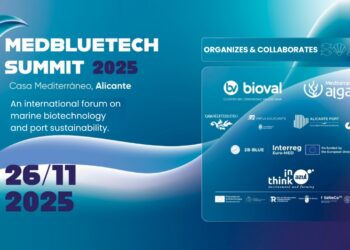Banana Peels: From Waste to Fish Feed – The aquaculture industry faces the challenge of finding sustainable alternatives to fishmeal, a costly and limited resource used in fish feed. Researchers are exploring unconventional ingredients, such as fruit by-products, to reduce or replace fishmeal in aquaculture diets.
In this article, we delve into a study conducted by researchers from the Phichit Freshwater Aquaculture Research and Development Center and Naresuan University, which explores the possibility of using banana peels as a protein source in fish feed.
Banana peels, a significant agricultural by-product often discarded as waste, offer great potential as a fish feed ingredient due to their rich composition of phytochemicals, antioxidants, proteins, carbohydrates, vitamins, minerals, and other bioactive compounds. However, the presence of anti-nutritional factors (ANFs) poses a challenge. To address this, researchers focused on the power of fermentation with molasses.
Fermentation of banana peels with molasses provides a dual benefit. Firstly, it increases the protein content of the peels, making them a more suitable ingredient for fish feed. Secondly, fermentation helps break down the ANFs present in banana peels, ensuring their safety for fish consumption.
Feeding Tilapia with Banana Peel Fermented Feed
The study investigated the effectiveness of feeding fish fry with banana peels fermented with molasses (MFBF). Researchers prepared fish feeds containing varying levels of MFBF, replacing fishmeal, and fed them to tilapia fry. The growth and health of the fish were monitored over an eight-week period.
Promising Results for Sustainable Aquaculture
The study yielded promising results, indicating the potential of MFBF as a sustainable alternative in tilapia aquaculture. The nutritional value of MFBF was found to be superior to that of unfermented banana peels, with higher crude protein content (32.1% CP). Additionally, the crude lipids, fiber, ash, and carbohydrate levels in MFBF were lower than those in unfermented banana peels, demonstrating improved nutritional composition.
Tilapia-fed diets containing MFBF, along with traditional fishmeal, exhibited growth comparable to those fed solely with fishmeal. Notably, diets with up to 50% MFBF showed no compromise in growth, indicating the effective replacement of a significant portion of fishmeal in tilapia feed.
The study’s findings have significant implications for the future of tilapia aquaculture:
- Reduced Dependence on Fishmeal: Incorporating banana peels into fish feed reduces reliance on fishmeal, contributing to the conservation of fish populations and promoting environmentally friendly aquaculture practices.
- Waste Reduction and Circular Economy: By utilizing banana peels, an agricultural waste product, in fish feed, the study supports waste reduction efforts and fosters a circular economy approach in aquaculture.
The utilization of banana peels fermented with molasses (MFBF) as an alternative protein source in tilapia feed shows promise for sustainable aquaculture. The study demonstrates that MFBF can effectively replace fishmeal up to 50% without compromising the growth and survival of tilapia fry. This research offers a crucial step towards a more environmentally friendly and economically sustainable future for tilapia aquaculture.
Banana Peels: From Waste to Fish Feed







